How to Enjoy Camping in the Snow
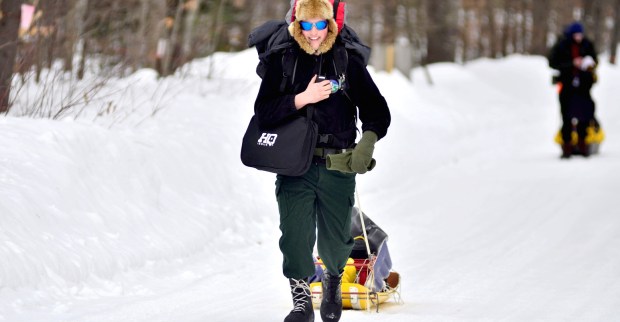
If you live in a climate like Miami, Florida, where the average low temperature in the coldest part of the year is higher than 60 degrees, getting outside in winter isn’t a problem.
For the rest of us, getting outdoors in those months takes a little more work. Maybe there’s a feeling that you’d rather just stay in.
Our advice: Don’t do it.
You can still go outside in the winter, no matter how cold it gets. At Camp Hinds near Raymond, Maine, Scouts and Venturers gather each winter for the Pine Tree Council’s Okpik program, where they build snow shelters, explore the area on skis and snowshoes, and generally learn how to have fun in the freezing cold.
Trust us — if they can do it, you can, too.
Here’s how.
STAY DRY
If you were making a top-10 list of the best ways to stay warm in winter, staying dry would be Nos. 1-5.
You absolutely have to stay dry.
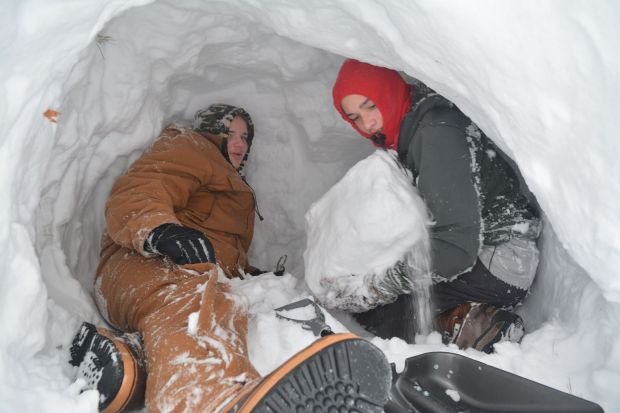
At Camp Hinds, participants learn the importance of staying dry at Friday night orientation sessions, where staffers discuss how to avoid hypothermia. It’s reinforced on Saturday, when the guys are out in the snow building shelters, exploring or just goofing around. You can get wet pretty easily from crawling around in the snow while building a shelter. Or from snowball fights with your friends. During the day, a little moisture might not be that big a deal. But at night, with the sun gone and temperatures dropping below zero, it can be a major problem.
“When you get wet when it’s very cold out and you don’t get dry, you can get very cold very quickly,” says 14-year-old Donnie Kulowski, who attended the Okpik program last winter with Troop 256 from Kensington, Connecticut. “The best-case scenario is it’ll just be a nuisance and you’ll be cold and you’ll have a bad time.
“The worst case is if you don’t get dry, you’ll continue to get colder and colder until bad things happen.”
Always have an extra set of dry clothes handy if you get too wet and too uncomfortable. And always make sure your clothes are made of the right materials.
WEAR THE RIGHT CLOTHES
Two words: Cotton kills.
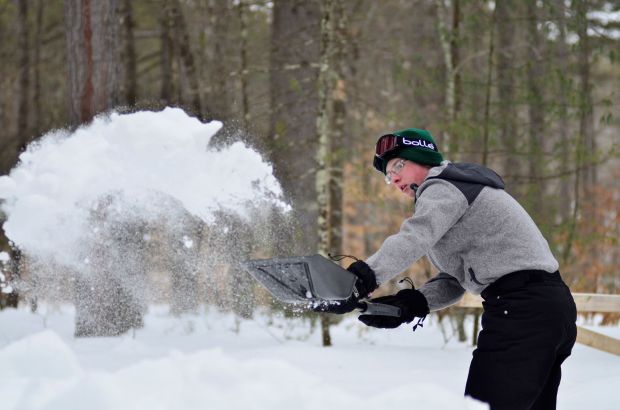
When you’re gathering your gear for a winter outing, repeat those words over and over. Sweatshirts, blue jeans and even some jackets can’t keep you as warm as wool and man-made materials that are designed to dry fast.
If Scouts show up to Camp Hinds in the winter wearing blue jeans, they are given a pair of wool pants to change into. Wool is tough, and it does a much better job of holding in heat than cotton. And that thing about staying dry?
“Wool will hold in the heat even if it gets wet,” says 16-year-old Sam Martin, one of the instructors at Camp Hinds. Okpik participants are taught to dress in layers. The non-cotton innermost layer — basically long under wear — is designed to keep sweat off your body. (Yes, you can sweat in winter. More on that later.)
The middle, insulating layer traps heat close to your body. And the outer, waterproof “weather” layer blocks wind, rain and snow and anything else Mother Nature throws at you.
KEEP YOUR COOL
Most winter camping newbies are to learn that it is very possible to overheat in the winter. This is bad. When your body gets too warm, it produces sweat. When you sweat, you get wet. And remember what we said about staying dry?
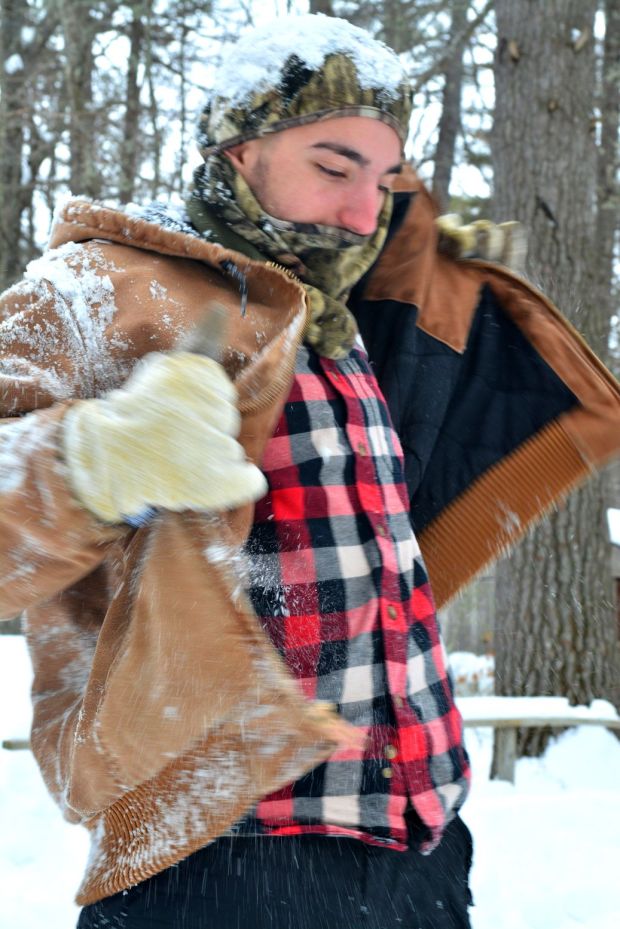
The wicking layer will do its part to keep the sweat away from your skin. But even it can become saturated if you don’t take action.
“If you get too warm, you can take off a layer,” says 17-year-old Eagle Scout Phil Dow, another staff member at Hinds. “If you get too cold, you can throw a layer back on.
“It’s been 10 degrees and I’ve seen Scouts with just their wicking layer on building their shelters because their body is working so hard they’re making all that heat themselves.”
Lots of guys make the mistake of getting all bundled up before they go outside so they’re nice and warm. What they fail to realize is that once you start snow-shoeing, skiing or building a shelter, your body will warm up significantly.
That’s why it’s OK to be a tiny bit cold when you first start. Not miserable cold. Just a tiny bit cold. That way, when you really get going, your temperature will be just right. You should always have extra layers you can add just in case you get too cold.
EAT RIGHT; DRINK RIGHT
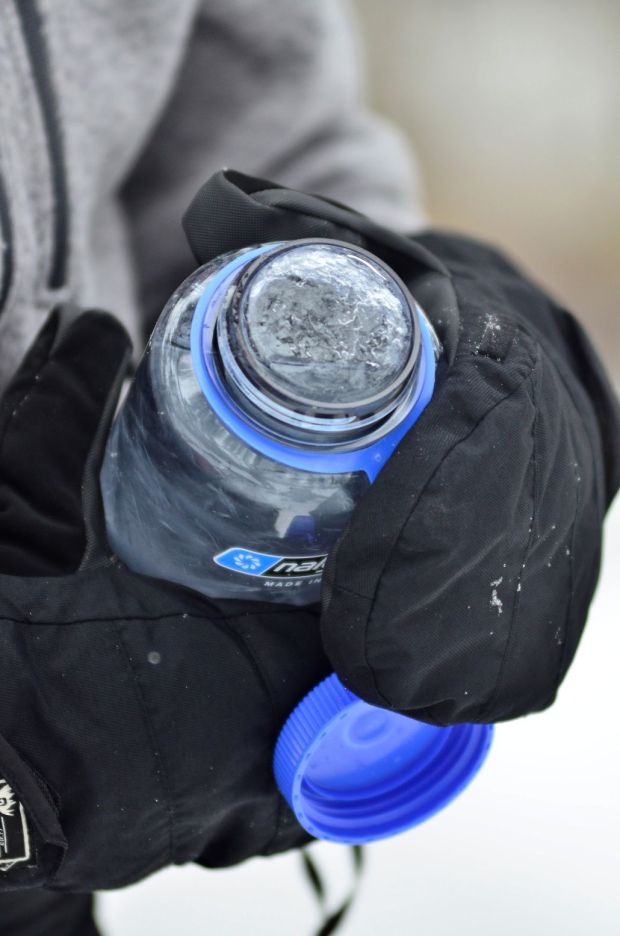
Your body is like a furnace. A furnace doesn’t work without the proper fuel, right?
A healthy, hearty meal and plenty of water will go a long way in helping your body maintain its core temperature when you’re outside in the cold.
“It’s not always something people think about,” says 17-year-old Eagle Scout Eri Martin, who worked as senior guide at Hinds last winter. “Your body uses up a lot of energy to stay warm.”
No matter how many layers of clothing you’re wearing, and no matter how dry you are, your body can’t keep itself warm without healthy food.
Another common mistake is not drinking enough water. In fact, dehydration is one of the leading causes of hypothermia, the condition in which your body is losing heat faster than it can replace it.
PAY ATTENTION
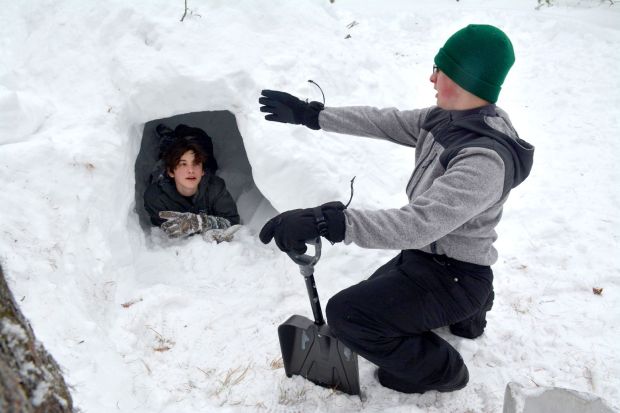
Hinds participants are reminded to keep their eyes on each other and watch for signs of the umbles.” Fumbles (the inability to perform tasks), grumbles (confusion), mumbles (slurred speech) and stumbles (difficulty walking) are all early signs of hypothermia.
“We tell them that they know each other better than we do,” Eri says. “So we ask them to be aware and let us know if they notice anything.”
The first step to treating someone showing symptoms of hypothermia is to get them into dry clothing (see the first tip in this story). Keep them away from wind and rain, and make sure he or she is bundled up with the correct clothes, and maybe even a sleeping bag.
Warm fluids are awesome, but even cold water is better than nothing. Make sure they have access to food that can quickly generate heat.
If the symptoms don’t improve soon, seek medical attention. Hypothermia is not something you want to mess with.
OTHER TIPS TO KEEP YOU WARM
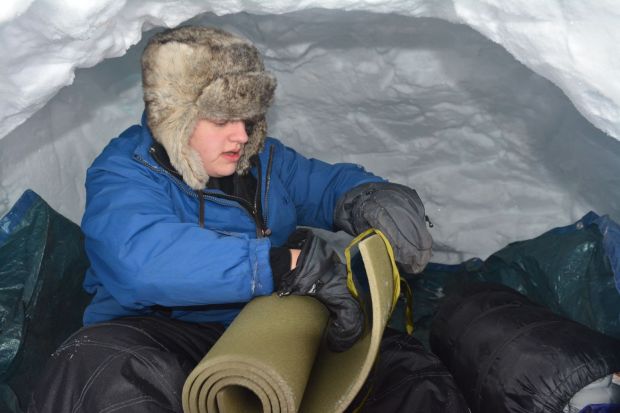
• Don’t be afraid to change clothes often, especially socks. If your feet get wet, it becomes really hard to keep your body warm. “I usually switch my socks once in morning, once during the day and once at night,” Eri says.
• Keep a clean set of winter clothes in a waterproof bag, and sleep with them in your sleeping bag at night. That way, you’ll have a warm set of clothes to put on in the morning.
• When you put your water bottle down in the snow, place it upside down. Water tends to freeze at the top first, so if the bottle is upside-down, you can flip it over and drink with no problems if it has begun to freeze.
• If you have access to warm water, fill your water bottle and stick it in your sleeping bag in the evening. When you go to sleep, your bag should already be nice and warm for you.
• Sleeping with a hat on is good. But don’t bury your entire head in your sleeping bag. If you breathe out in your bag during the night, the moisture from your breath can cause your bag to get wet.
• If your clothes get wet, have a place to store them in a backpack where they won’t get every- thing else wet, too.
• When you’re snug in your sleeping bag at night, the last thing you want to do is go outside and pee. Take an empty water bottle. Label it “P.” Use it at night. Do not drink out of it again. Ever.
Okpik
Okpik (pronounced “OOK pick”) is the BSA’s cold-weather adventure program. There’s an Okpik program at the Northern Tier National High Adventure Bases, and there are Okpik programs at several council camps across the country, such as Camp Hinds in Raymond, Maine. Learn more about the Pine Tree Council’s winter program at go.scoutlife.org/wintercamp.
Get tips on winter-shelter building at go.scoutlife.org/quinzee










Thanks for the helpful tips, my boy scout has his very first winter campout this month. I never knew what wicking was until someone told me.
Remember never dress in cotton. Cotton Kills
Good tips
This really helped. Thank you.
I did similar events where if you wore blue jeans you lost points. The events were mostly fun but with a competitive side
Wow i’m gonna try that!!!
I used wool as a scout, but have switched to layers of fleece. It is lighter and warmer. When wet, take it off and swing it hard over your head; the water will fly out. It will be 90% dry and you can put it back on.
thanks for the information!!
This really helped me be a better snow camper!
Thank you for promoting our program in Pine Tree Council.